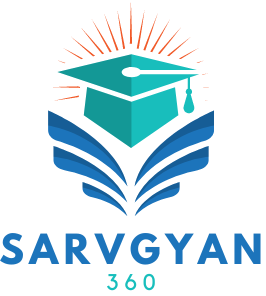BEGG-172: Language and Linguistics – A Comprehensive Overview
Introduction
The study of language is an exploration into one of the most defining characteristics of human beings. Language shapes our thoughts, cultures, and societies, making it an indispensable aspect of our lives. The course BEGG-172: Language and Linguistics offered by Indira Gandhi National Open University (IGNOU) delves into this fascinating subject, providing students with a thorough understanding of the principles and complexities of language. This course is essential for anyone interested in linguistics, communication, or the humanities, offering insights that are both academically enriching and practically relevant.
Understanding Language and Linguistics
Language: A Unique Human Faculty
Language is a system of communication that uses symbols, sounds, and gestures to convey meaning. It is unique to humans and is a fundamental aspect of our identity and cognitive processes. Language allows us to express our thoughts, emotions, and intentions, facilitating social interaction and cultural transmission.
Linguistics: The Scientific Study of Language
Linguistics is the scientific study of language. It involves analyzing language form, language meaning, and language in context. Linguistics covers a wide range of topics, including phonetics, phonology, morphology, syntax, semantics, and pragmatics. It also explores language acquisition, sociolinguistics, psycholinguistics, and historical linguistics.
Course Structure and Content
Unit 1: Introduction to Language
The first unit introduces students to the concept of language, its functions, and its importance in human society. It covers the characteristics that distinguish human language from other forms of communication, such as animal communication. This unit also explores the diversity of languages spoken around the world and the role of language in shaping human experience.
Unit 2: Phonetics and Phonology
This unit focuses on the sounds of language. Phonetics is the study of the physical sounds of human speech, while phonology deals with how those sounds are organized within a particular language. Students learn about different types of sounds (consonants, vowels, etc.), how they are produced, and how they function in communication.
Unit 3: Morphology
Morphology is the study of the structure of words. This unit examines how words are formed from smaller units called morphemes. Students explore different types of morphemes (roots, prefixes, suffixes) and the rules governing word formation in various languages.
Unit 4: Syntax
Syntax is the study of sentence structure. This unit delves into how words combine to form grammatical sentences. Students learn about different types of sentence structures, grammatical categories, and syntactic rules. This unit also introduces various syntactic theories and frameworks.
Unit 5: Semantics
Semantics is the study of meaning in language. This unit explores how meaning is constructed and interpreted in linguistic expressions. Students examine different types of meaning (literal, figurative, contextual) and the relationship between words and their meanings.
Unit 6: Pragmatics
Pragmatics deals with language use in context. This unit investigates how context influences the interpretation of meaning. Students learn about speech acts, implicature, presupposition, and other pragmatic phenomena. This unit also covers the role of context in communication and the ways in which speakers convey and interpret meaning.
Unit 7: Language Acquisition
This unit explores how humans acquire language. It covers first language acquisition (how children learn their native language) and second language acquisition (how individuals learn additional languages). Students examine different theories of language acquisition, the stages of language development, and factors influencing language learning.
Unit 8: Sociolinguistics
Sociolinguistics studies the relationship between language and society. This unit examines how social factors (such as age, gender, ethnicity, and social class) influence language use. Students explore topics such as language variation, language change, multilingualism, and language policy.
Unit 9: Psycholinguistics
Psycholinguistics is the study of the psychological processes involved in language use. This unit investigates how language is processed in the brain, how people comprehend and produce language, and how language and cognition are related. Students learn about language disorders, language processing models, and experimental methods in psycholinguistics.
Unit 10: Historical Linguistics
Historical linguistics studies the history and development of languages over time. This unit explores how languages change, the methods used to study language history, and the relationships between different languages. Students learn about language families, linguistic reconstruction, and the processes of language change (such as sound change, grammatical change, and lexical change).
Importance of the Course BEGG-172
Academic Enrichment
BEGG-172 provides a comprehensive foundation in linguistics, making it an essential course for students pursuing studies in linguistics, languages, literature, or related fields. It equips students with critical analytical skills and a deep understanding of language, enhancing their academic and research capabilities.
Practical Relevance
The knowledge gained from this course is applicable in various professional contexts. Understanding language and its functions is crucial for careers in teaching, translation, communication, marketing, and more. The course also provides valuable insights for those working in multicultural and multilingual environments.
Cultural Awareness
By exploring the diversity of languages and the ways in which language shapes culture, students gain a broader perspective on human societies. This cultural awareness fosters empathy, tolerance, and effective communication in a globalized world.
Cognitive Insights
Studying linguistics offers insights into the cognitive processes underlying language use. This understanding can inform approaches to education, cognitive science, artificial intelligence, and other fields interested in the human mind and behavior.
Conclusion
BEGG-172: Language and Linguistics is a vital course that delves into the intricate and fascinating world of human language. Through its comprehensive units, it provides students with a robust understanding of the fundamental aspects of linguistics. Whether for academic, professional, or personal enrichment, this course offers invaluable knowledge and skills that are relevant across various domains. Embracing the study of language through this course is a step towards understanding one of the most essential and unique features of human existence.



Reviews
There are no reviews yet.